1. If \[\alpha+\beta=\pi/2\] and \[\beta+\gamma=\alpha\] , then tan \[\alpha\]
equals
a) \[2\left(\tan\beta+\tan\gamma\right)\]
b) \[\tan\beta+\tan\gamma\]
c) \[\tan\beta+2\tan\gamma\]
d) \[2\tan\beta+\tan\gamma\]
Explanation:

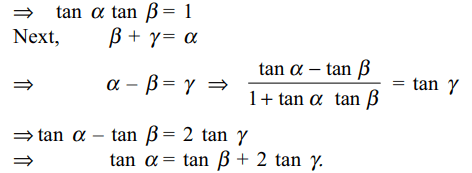
2. The number of integral values of k for
which the equation 7 cos x + 5 sin x = 2k + 1 has a solution is
a) 4
b) 8
c) 10
d) 12
Explanation: The given equation can be written as

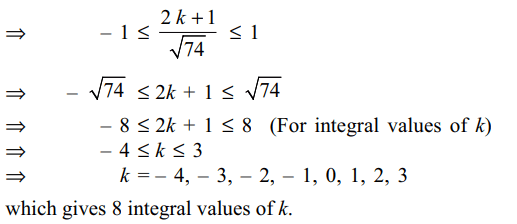
3.If \[x_{n+1}=\sqrt{\frac{1}{2}\left(1+x_{n}\right)}\] , then
\[\cos \left[\frac{\sqrt{1-x_0^2}}{x_{1}x_{2}x_{3}.... infinite }\right]\left(-1 < x_{0} < 1\right)\]
is equal to
a) -1
b) 1
c) \[x_{0}\]
d) \[1/x_{0}\]
Explanation:

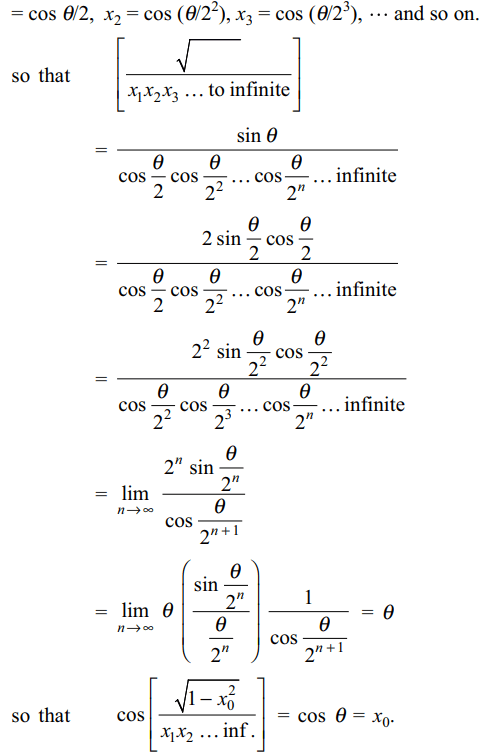
4. The simplest value of \[\frac{2}{\sqrt{{2}+\sqrt{{2}+\sqrt{2+2\cos4x}}}}\]
is
a) \[\sec\left(x/2\right)\]
b) \[\sec x\]
c) cosec x
d) 1
Explanation: Given expression is equal to

5. If \[\alpha,\beta\] are positive acute angles and \[\cos 2\alpha =\frac{3 \cos 2\beta-1}{3-\cos2\beta}\]
then \[\tan\alpha=k \tan\beta\] such that
a) \[k=-\sqrt{2}\]
b) \[k=\sqrt{2}\]
c) k=1
d) \[k=\sqrt{3}\]
Explanation:

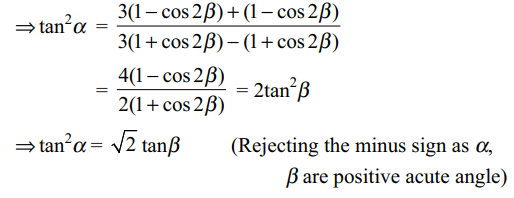
6. If \[\tan\alpha+\cot\alpha =p\] , then
a) \[\tan^{2}\alpha+\cot^{2}\alpha =p^{2}-2\]
b) \[\tan^{3}\alpha+\cot^{3}\alpha =p\left(p^{2}-3\right)\]
c) \[\tan^{5}\alpha+\cot^{5}\alpha =p^{5}-5p^{3}+5\]
d) All of the Above
Explanation:


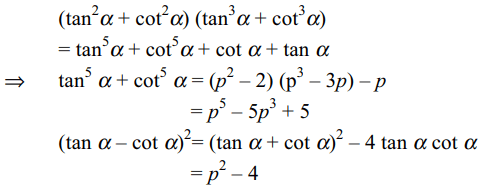
7. If \[m\tan\left(\theta-30^{\circ}\right)=n\tan\left(\theta+120^{\circ}\right)\] , then
a) \[\frac{m}{n}=\frac{3-4 \sin^{2}\theta}{1-4 \sin^{2}\theta}\]
b) \[\cos 2\theta=\frac{m+n}{2\left(m-n\right)}\]
c) \[\frac{m-n}{m+n}=2\sec 2\theta\]
d) Both a and b
Explanation:


8. If \[\frac{\tan 3 A}{\tan A}=k\] , then
a) \[\tan^{2} A=\frac{k-3}{3k-1}\]
b) \[\frac{\\cos 3A}{\cos A}=\frac{2}{k-1}\]
c) \[\frac{\sin 3A}{\sin A}=\frac{2k}{k-1}\]
d) All of the above
Explanation:


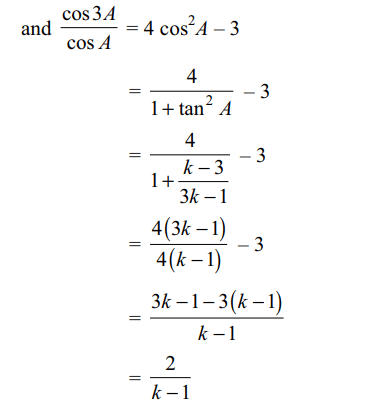
9. If \[\tan\frac{\alpha}{2},\tan\frac{\beta}{2}\]
are the roots of the
equation \[8x^{2}-26x+15=0\] , then
a) \[\tan\frac{\alpha+\beta}{2}=\frac{-26}{7}\]
b) \[\cos\left(\alpha+\beta\right)=\frac{-627}{725}\]
c) \[\sin\left(\alpha+\beta\right)=\frac{-364}{725}\]
d) All of the above
Explanation:


10. \[\left(m+2\right)\sin\theta+\left(2m-1\right)\cos\theta=2m+1\] , if
a) \[\tan\theta = 3/4\]
b) \[\tan\theta = 4/3\]
c) \[\tan\theta = 2m\left(m^{2}-1\right)\]
d) Both b and c
Explanation: The given relation can be written as
